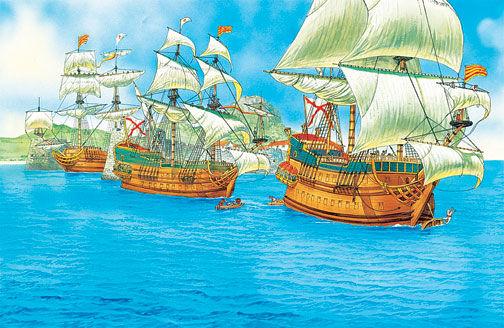The final resting place of Spanish fleet of 1766 could be in Sabine Pass
Published 4:05 pm Saturday, December 29, 2018
By Bruce Lockett
Director Texas Archeological Study Association
In the year 1766, a Spanish Fleet was preparing to return to Spain loaded with the cargo of the New World. The trip and its preparation had been several months in the planning and a group of six Spanish vessels was loaded for the return voyage home. In their manifest records contained the riches of the newly discovered world. Gold, Silver, Copper, Spices, Plans and other items of the Americas were on board. Under the direction of Augustin Ydiaquez, in the latter part of August, the fleet prepared to return to Spain. However, they were not able to find the prevailing winds they had hoped for. The start of the storm season was now underway and they would find out the dangers of sailing in Gulf waters.
Trending
In the first days of September, the weather began to change and a storm that would last for the next 10 days took its toll on the fleet. The ships, while well built, could not withstand the constant battering of the wind and waves. Their bellies full with the rewards of hard labor, the ships were now forced o pay the price of their new adventure. The sailors were at the point of desperation and hope and all that remained was self-preservation of life. The lower the vessels went into the water, the more apparent it was that the cargo and ships would be lost to the storm. Frantically fighting the sea, hungry, exhausted, and worn, it was time to pay their dues.
Anchors which had been dropped to prevent beaching now became the roots of the destiny of a doomed fated vessel. Holding the vessels in place while they were literally slapped apart by winds and waves. The sails ripped from the mast, mast broke in half and tangled the rope, and every seam was surging the water, Clinging to anything that would float, tirelessly, they tried to maintain their valor in the face of adversity. The final hour had now come, cargo and ship were secondary, at all cost life must be preserved to tell the story. It was now every man for himself.
Tossed into the soup of the sea, self-preservation was the order of the day. To stay with the vessel meant certain death. One must clear the ropes, the mast and the ships pull as she slipped beneath the waves. Life would provide another day for sailing, another day to salvage cargo, today was meant for safekeeping one’s life and limbs. The actual amount of lives lost and the total cargo may never be known. The fury of the storm erased half of Spain’s glory. Merchant vessels that had accompanied the fleet were lost as well. It would take several weeks before the fleet would be able to sail again. Texas Archeological Study Association (TASA) research team continues to gather information on the destruction of the fleet.
In 1980, events turned which began to uncover part of the fleet of 1766. El Constantine, one of the ships of the fleet, was found off the mouth of Calcasieu Pass near Cameron, Louisiana. A local shrimper had snagged his nets on the wreck and when trying to untangle them had come across one of the earliest wrecks found on the Louisiana Coast. Excitement ran high as gold, silver, copper, and precious ancient artifacts were brought up. This particular vessel was found in less than 15 feet of water and less than one and a half miles from shore. Since this time, olive jars have washed up near Holly Beach in Louisiana and coins have surfaced near High Island with marks of Spanish origin. It is believed that between the areas of Holly Beach and High Island may lay the rest of the 1766 fleet.
Recent discoveries of ship timbers with wooden dowel pins of unknown origin have washed ashore on Texas Point. The age and material of these timbers are the oldest timbers recorded to date on Texas beaches. Very little metal was used and the pieces are interlocking as structural wall supports. Research is being done through Spanish archives to see if these pieces match any of Spanish origin. All archive notes of the El Constantine will be processed for further research of the type of vessels that may have gone down. At the entrance to Sabine Pass, over 32 wreck sites are marked in a three-mile 180-degree area. Just below the surface of the water may be one of the greatest historical finds in Texas or Louisiana. The fleet, which carried 15 million dollars in silver and gold pesos and numerous artifacts, waits to be found.
It was a natural process during storms to seek land and inland waterways, the Sabine River would have afforded that harbor of safety. It is possible that the remains of these vessels may lie just off the coast of either Texas or Louisiana. Photographs taken at low tide by aerial reconnaissance have shown the outlines of several vessels in the water. More research will be needed before the search is pinpointed, but one thing is for sure, some type of Spanish wreck awaits the divers and researchers who will search for the lost treasures of the Corazon de Jesus and the Santa Barbara.






